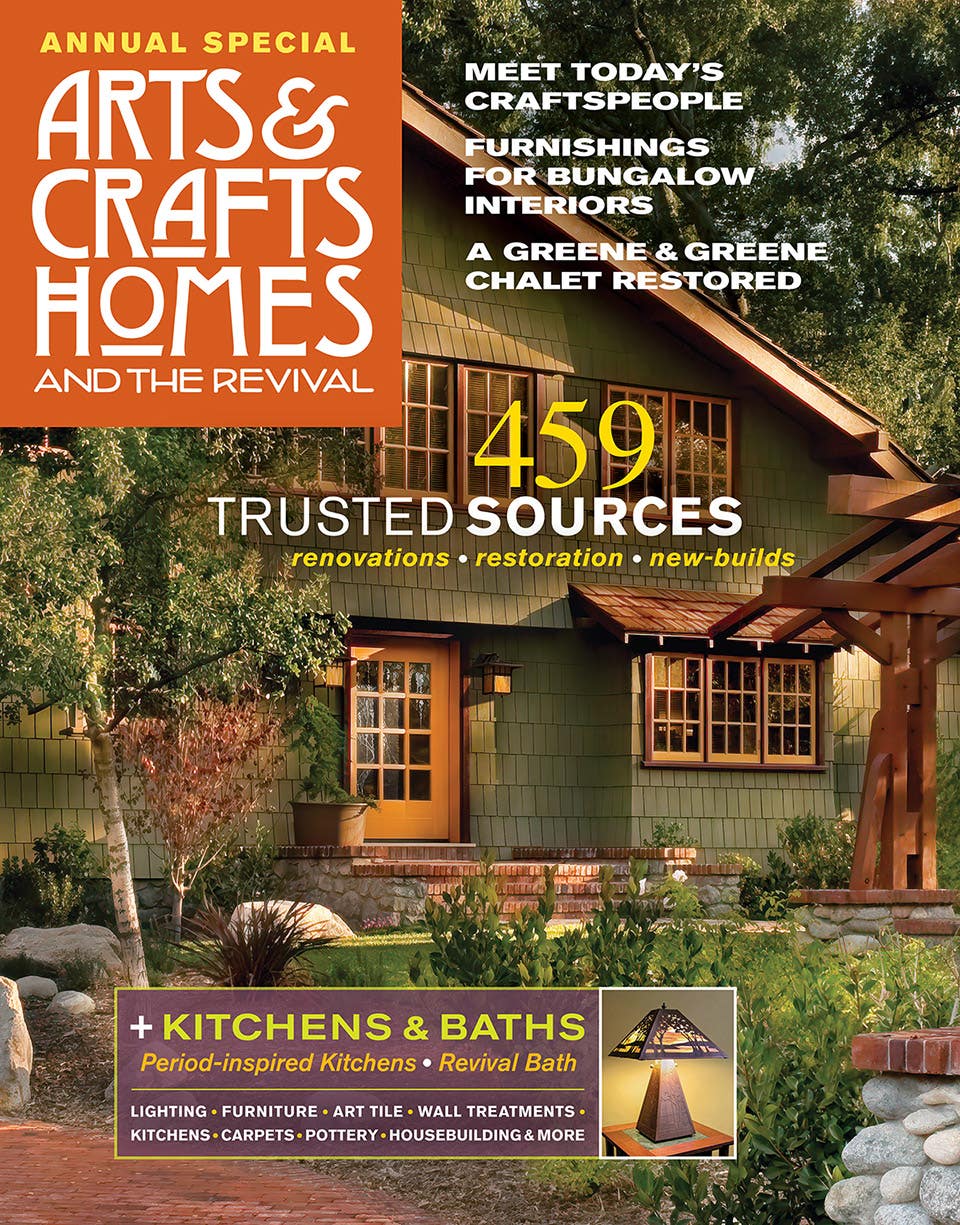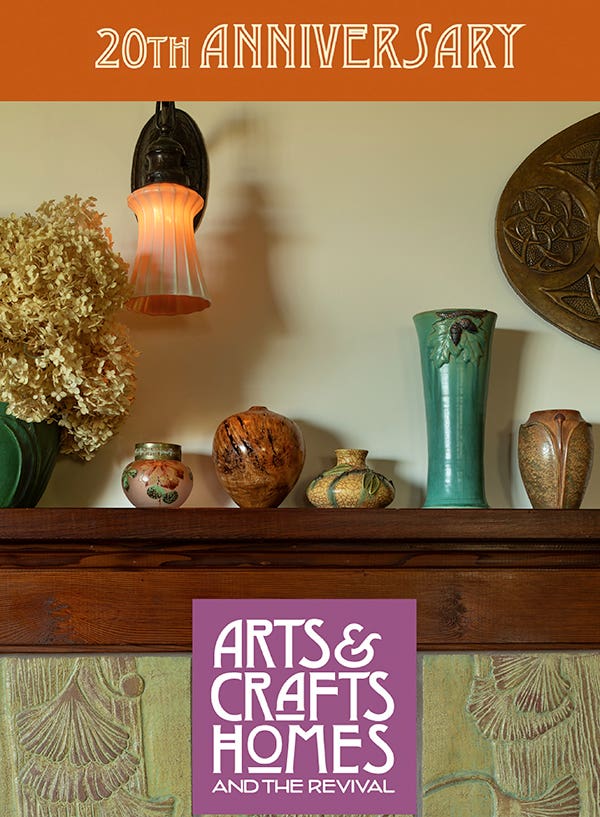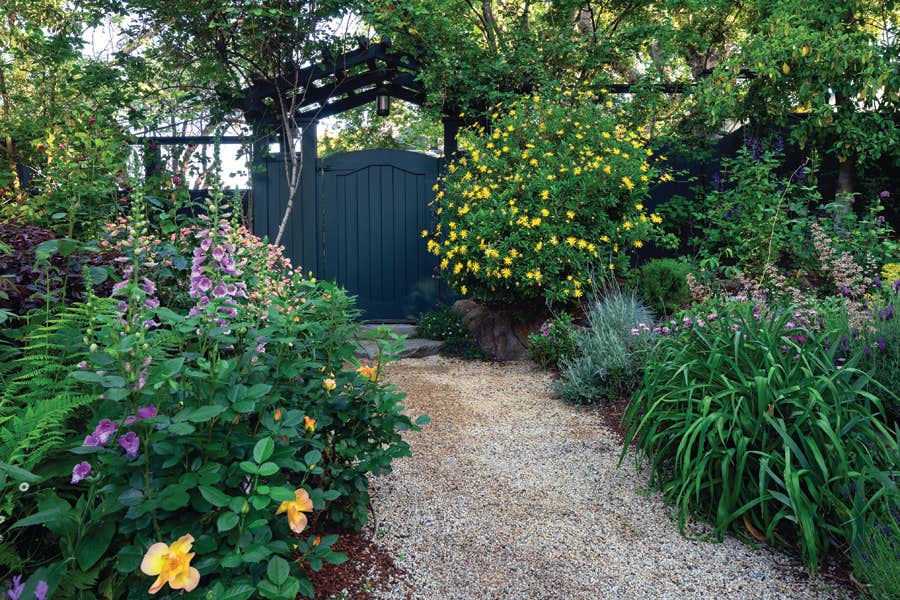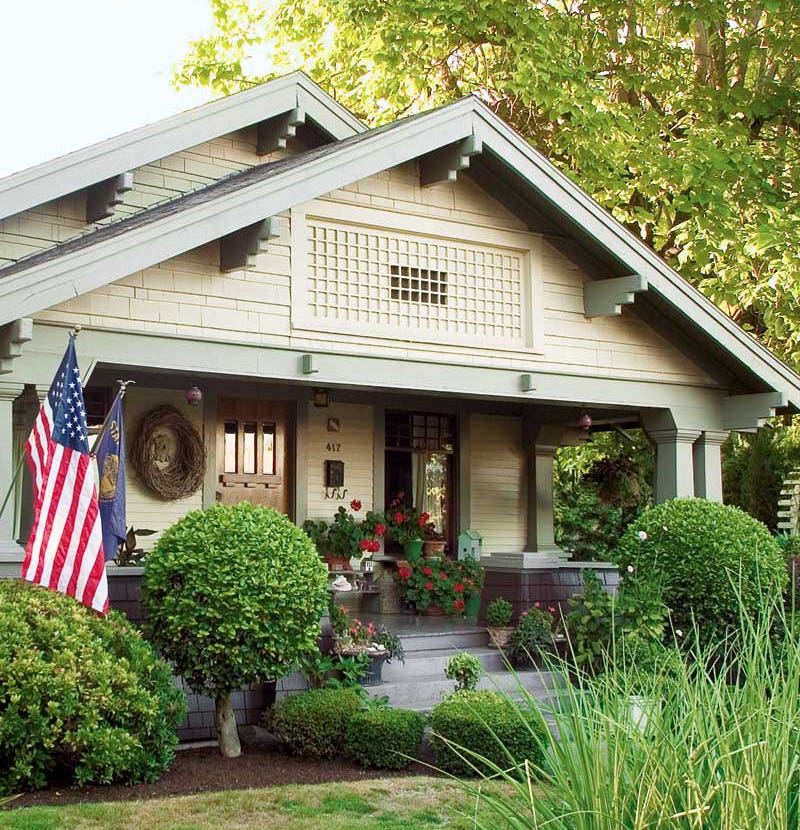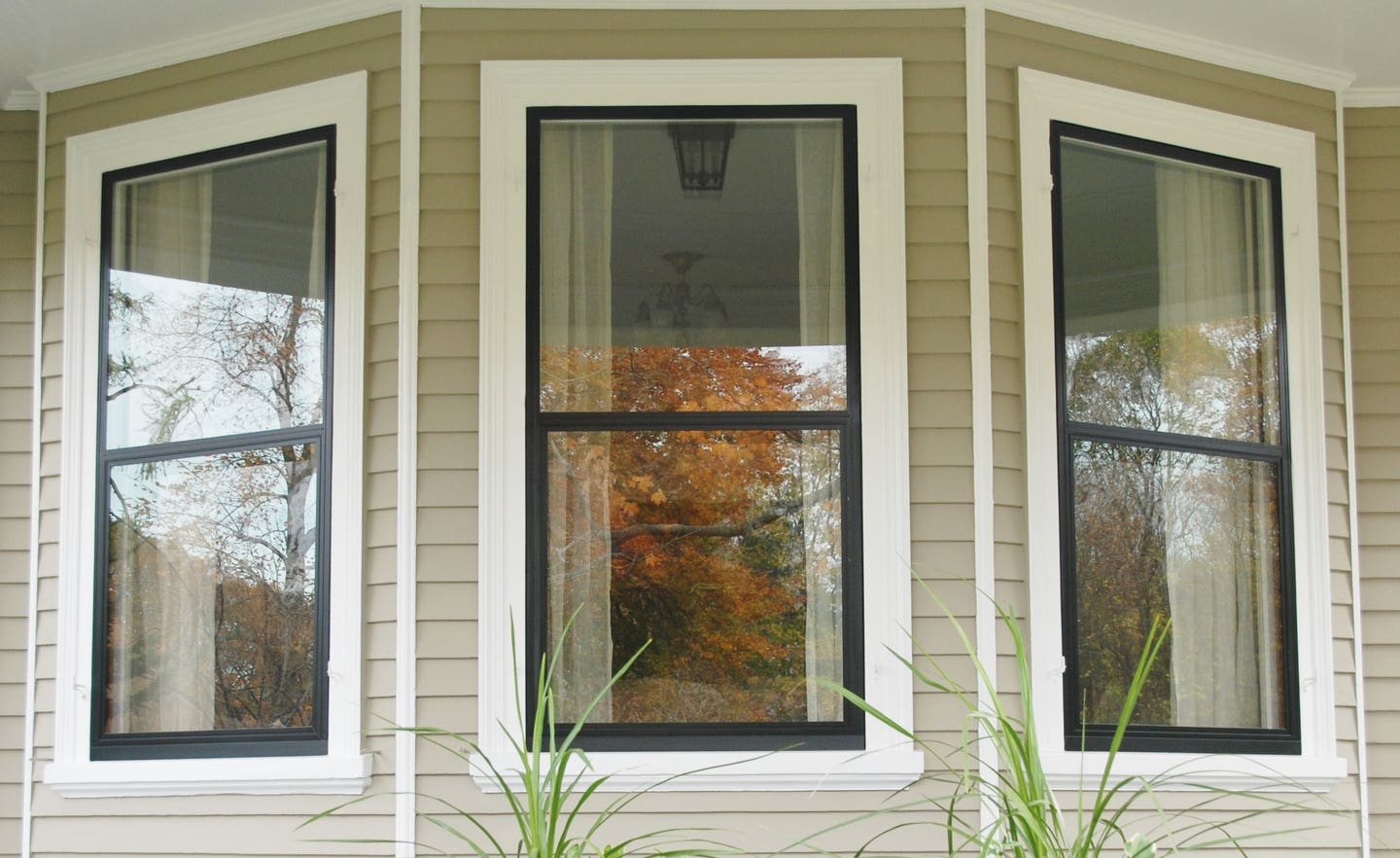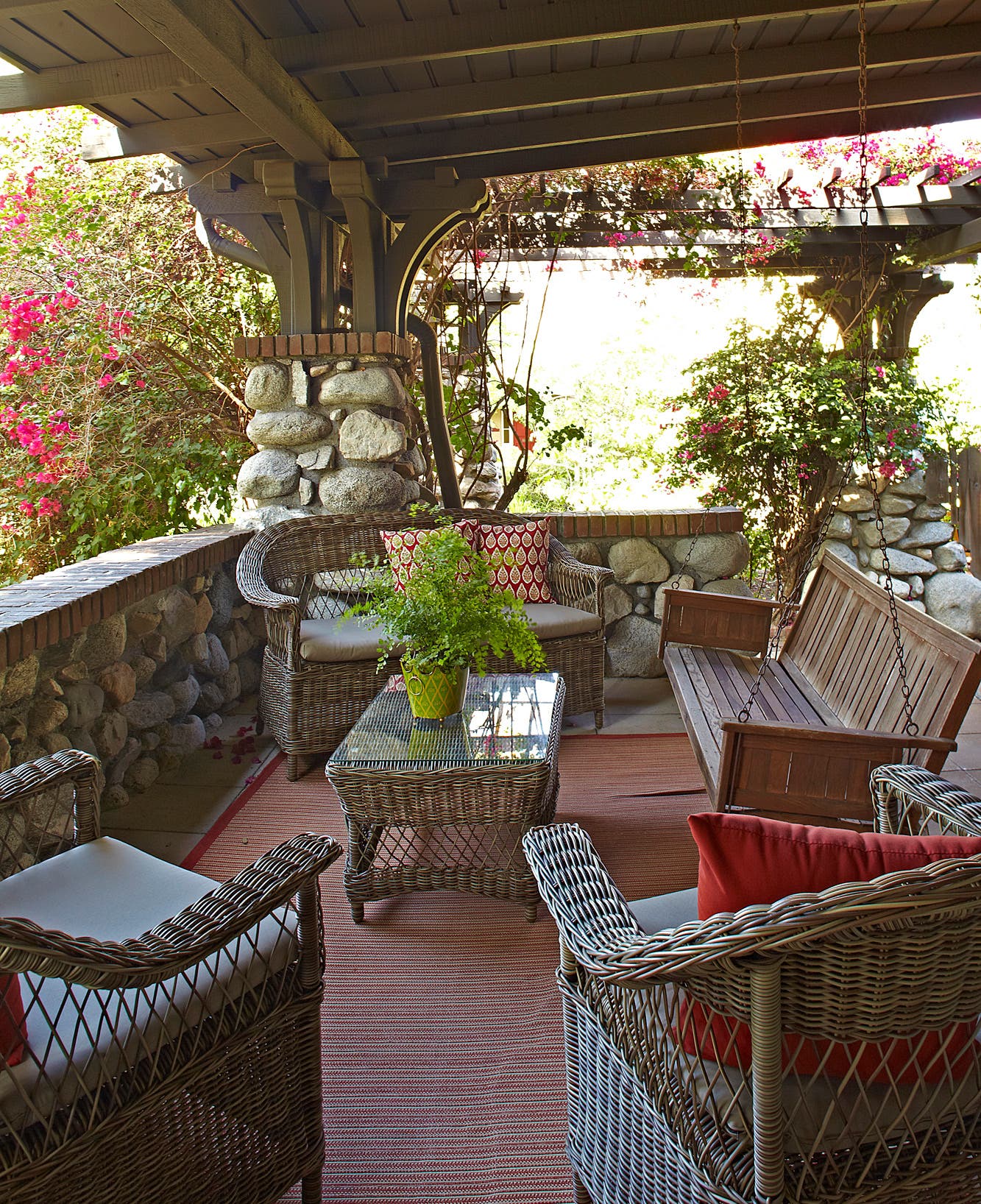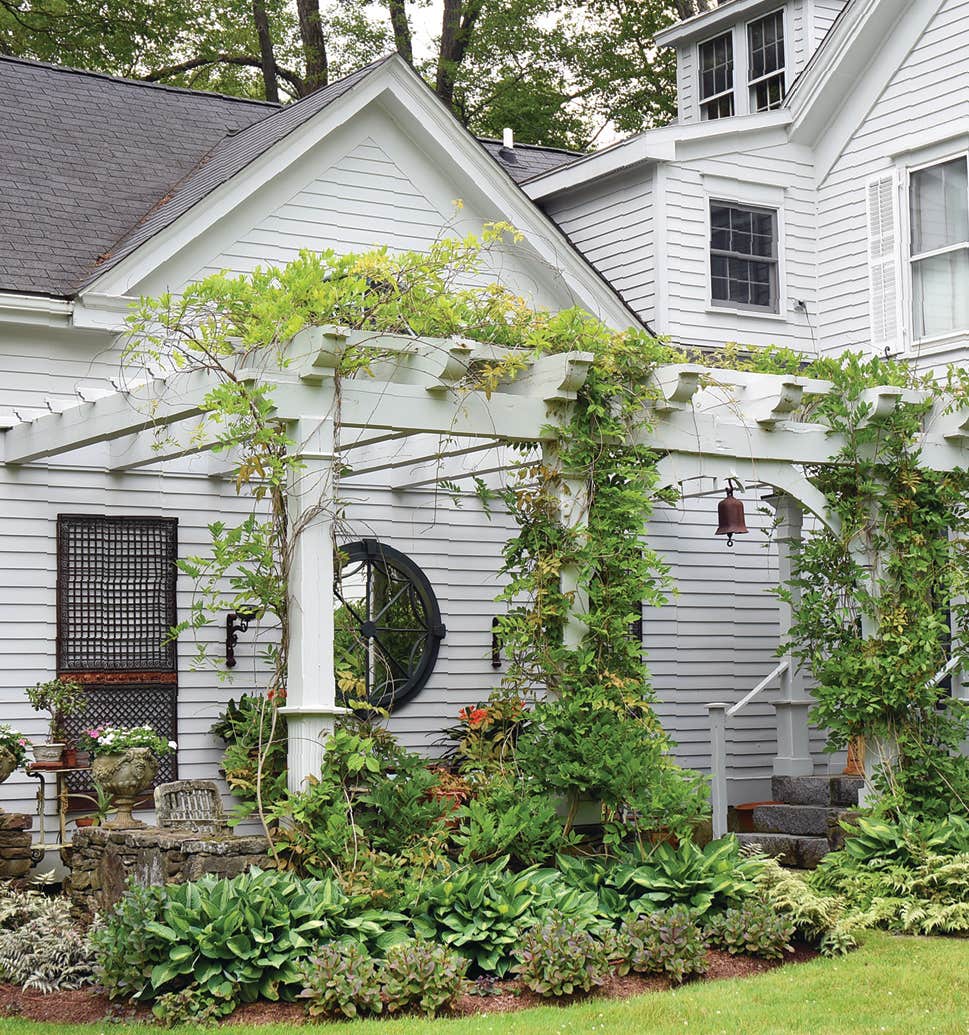New Garages that Blend In
What makes a new garage for a historic property look like it belongs? It’s all about scale—and the right details that make it blend in and provide harmony. Since the bungalow era overlaps the adoption of the automobile, style cues abound for compatible design.
It’s all about scale—and the details, says Jeff Nott of Nott & Associates, a design/build firm in Pasadena, California. When done correctly, Nott says, even a three-bay garage can look perfectly at home.Take a story-and-a-half garage Nott built for a collector of vintage cars: at 1600 square feet, it’s larger than many bungalows.
“The owner actually has a car lift inside,” says Nott. Even with two car bays and a side room with a window, the garage doesn’t overwhelm the property, largely because a shallow roof pitch and details like shaped gable brackets and exposed rafter tails are all copied directly from the house.
On another garage project (seen above), Nott & Associates borrowed the distinctive rounded and notched pattern cut into the ends of fascia boards from a house in the neighborhood. (When that happens to be Pasadena’s Bungalow Heaven, one of the largest Arts & Crafts districts in the country, it’s easy to find inspiration.) The “clapboard” siding is modern fiber cement, “but we install it with true mitered corners, so the look is authentic,” Nott says.
A new garage in Upstate New York was a must for a family who’d moved here from a milder climate. The freestanding garage is tailored to the look of the existing 1910 house, a Colonial Revival with Arts & Crafts touches. At first look, the design of the garage is restrained, allowing it to blend with the classic house. But details are well considered: Deep eaves with a bracketed extension over the side- entry door match similar details on the house; so do the lap siding and shed-roof dormer. The rusticated concrete-block foundation is another period detail. Classic trim and shutters are finishing touches.
Appropriate design goes beyond aesthetics to solve site problems. During remodeling, the owner of a two-story Arts & Crafts house in Seattle wanted to replace existing garage doors. The garage space is tucked underneath a porch, slotted between two tall brick piers. The new doors, which have an open-swing design, make it work. Each side is a typical three-panel Craftsman style door with divided lights crowning the top. The owner says the style details pull the facade together.
At a 1902 bungalow in Asheville, North Carolina, the old garage had been built into a hill at the rear of the driveway a few decades ago. It had water infiltration and drainage problems that were also threatening the house. To resolve the drainage issue, Jane Mathews, a LEED-certified architect, designed a retaining wall around the new garage, allowing for air circulation and a narrow walkway. A shallow roof overhang on the back directs water away from the building; a matching overhang above the garage doors in front mimics the look of the porch roof on the main house. Other characteristics keyed to the house include deep eaves, the placement of both shingle and clapboard siding, Arts & Crafts bracket lamps with acorn shades, and strap hinges in black iron.
Garage Resources
- Nott & Associates, Pasadena, CA: nottassociates.com
- Real Carriage Door Company: realcarriage.com
- Aurora Architectural Design, East Aurora, NY: auroraarch.com
- Mathews Architecture, Asheville, NC: mathewsarchitecture.com
- Ever-Green Garage Doors: ever-greengaragedoors.com
Mary Ellen Polson is a creative content editor and technical writer with over 20 years experience producing heavily illustrated know how and service journalism articles, full-length books, product copy, tips, Q&As, etc., on home renovation, design, and outdoor spaces.

